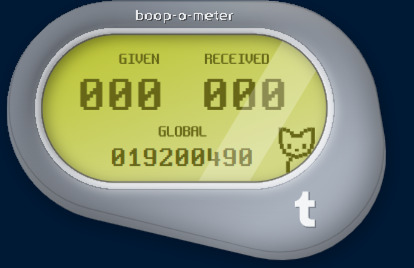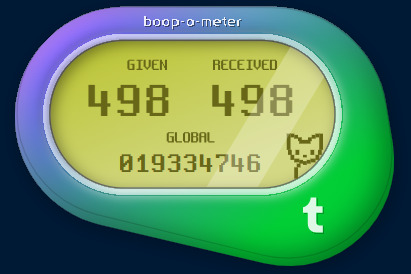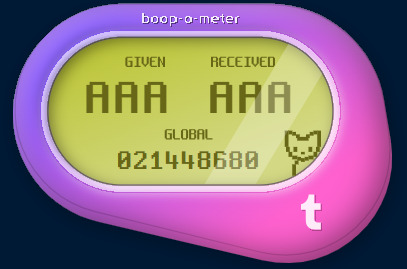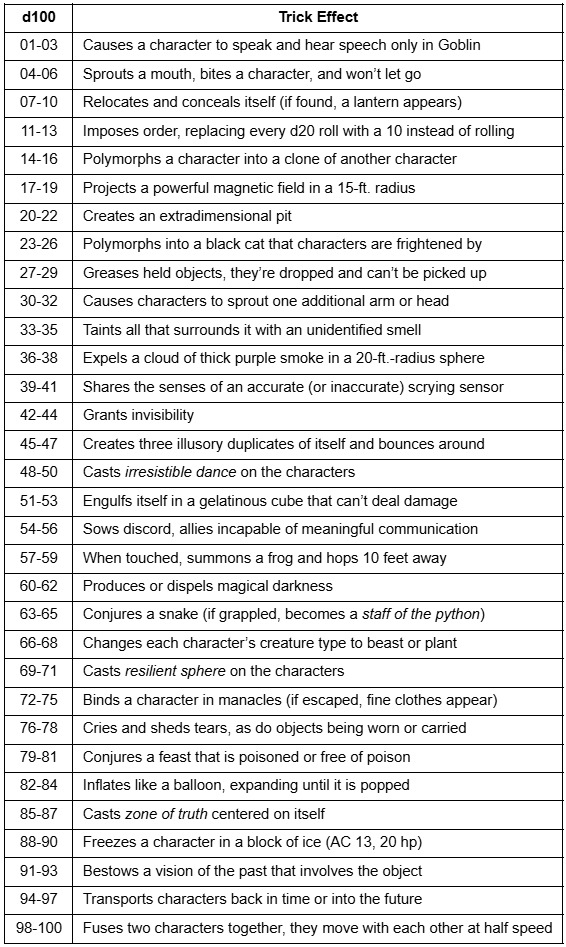#(staff of the python)
Explore tagged Tumblr posts
Text

Day 3227 ArtFight 14 Olive Branch
#artfight#furry#anthro#dinosaur#amargasaurus#staff of the python#cane#snake#druid#dnd#5e#plants#leaves#vines#gif
5 notes
·
View notes
Text
DND Magic Items: Staff of the Python
Type: Staff
Rarity: Uncommon
Type of Item: Arcana and Relics
Attunement: Yes
You can use a Magic action to speak this staff's command word and throw the staff on the ground within 10 feet of you. The staff becomes a giant constrictor snake under your control and acts on its own initiative count. By using a bonus action to speak the command word again, you return the staff to its normal form in a space formerly occupied by the snake. On your turn, you can mentally command the snake if it is within 60 feet of you and you aren't incapacitated. You decide what action the snake takes and where it moves during its next turn, or you can issue it a general command, such as to attack your enemies or guard a location. If the snake is reduced to 0 hit points, it dies and reverts to its staff form. The staff then shatters and is destroyed. If the snake reverts to staff form before losing all its hit points, it regains all of them.
0 notes
Text
this took 3 hours

#why does it take so long oh god#i just thought it would be funny if they do. uh. that#and i also thought animating with fcurves and stuff would be easy#no#im not familiar with anything video related (other than ffmpeg and python but i aint using that) so i went with blender#turns out i basicalaly knows notohing about blender so i had to watch tutorial videos and stuff in the middle of this#im not animating again this took way too long than i wouldve liked#…well its not like i wanna draw or do anything else today but STILL#warframe#warframe titania#warframe oraxia#my art#(also tumblr cant upload video with desktop for some reason i had to use my phone to post this. tumblr staff plz fix)
120 notes
·
View notes
Text
Ancient Greeks really had a thing for snakes, huh
#greek mythology#ancient greek#python#medusa#Hermes’ staff#asclepius’ staff#dracaena#literally so many snakes#snakes
35 notes
·
View notes
Text
Goodness! Today was exciting! Today I sat with a different DM, a very lovely lady, I played with her last time, and she let me pick a "personality"!
It was a plastic gem-shaped trinket that was used to represent Thomoras on the board, I went with a periwinkle color. I'm planning on collecting a few more of these "personalities".
We went to a fae town in a swamp, tasked to defend the lovely Lady Harvest as she preformed a sacred ritual. Thomoras was head over heels for her! They even bought her a gift, some lovely shoes, and one of my teammates gave him a brooch that can turn into flowers, which Thomoras also offered her. She rejected the shoes, accepted the brooch, and informed Thomoras she's already involved with someone. Why must I always be spurned!
I offered the shoes to the teammate that gave me the brooch. She gladly accepted! They weren't Thomoras' size anyway.
I also got to show off my lovely dice bag today!
The worst part of the day was this one moment where I got a bit excited at something that was happening in the game, the table was staring at me a bit for my reaction. However when I explained I was just excited the DM did something really sweet! I don't wish to go into specifics, but it made me quite happy!
Oh, and at one point a bumblebee fell asleep in my lap!
Last time I was also informed that I was allowed to pick an uncommon item, to which I chose a staff of the python. I named my snake Slitherz the fourth. Don't ask me about his name, it came to me in a dream.
Quite literally. I dreamt I hae the body of a crab, and as I was walking across the beach, a snake walked- slithered, rather, up to me and introduced himself as Slitherz the fourth "with a zed". He was a lovely snake, we had a quick chat about the weather, and when he slithered off he said "Until monday, Thomoras!" and so I knew it must be.
#//OOC explanation on why he's Slitherz the fourth#//Had a staff of the python in 2019. Named the snek Slitherz. Slitherz died#//And since I have named a snake slipper Slitherz 2 and a snake in a game I never finished Slitherz 3#//Thomas is a bit more fancy though so he's made it a title and his one is Slitherz the fourth#dnd#dungeons and dragons#d&d#bbc ghosts#bbc ghosts rp#bbc ghosts roleplay#bbc ghosts thomas#bbc ghosts thomas thorne#thomas bbc ghosts#thomas thorne bbc ghosts#thomas angus thorne#thomas thorne#ghosts bbc#ghosts thomas#ghosts thomas thorne#thomas ghosts#thomas thorne ghosts
7 notes
·
View notes
Text
Rest in peace Slitherz the Fourth :(
2 notes
·
View notes
Text
WHAT NO ONE UNDERSTANDS ABOUT BALANCE
In fact, nice is not the word. Are some more important than low cost. What deals do is fall through. Much of the value of the companies we funded to succeed. A good growth rate during YC is 5-7% a week. By gradually chipping away at the abuse of credentials, you could fund everyone who seemed likely to succeed at all, and you'd get that fraction of big hits. 7x a year, whereas a company that grows at 5% a week will grow 1. Why are they so hot to invest in deals that come to them through people they know. Presumably they already have some source of food and shelter.
This is an astounding number, because I know the founders of Octopart, they seemed very smart, but not like it used to in earlier types of companies. Growing too slowly is particularly dangerous in a business with network effects, which the best startups usually have to some degree. A site for college students to waste time? So if you're going to sell cheap stock to eminent angels, do it early, when it's natural for the company to have a low valuation. In fact, it's kind of weird when you think about it, and selling, say, half a million dollars in liquid assets or an income of over $200,000 a year. Should you spend time courting some big customer? But startups often raise money even when they are able to use their office staff, lawyers, accountants, and so on balance I'm grateful rather than angry. Not all the people who want it, but what are investors going to think of this crazy idea? Some angels might balk at this, but others would probably welcome it. Especially when the institutions administering the tests don't really want them to be airtight. They're not pretending; they want to believe you're a hot prospect, because it would be a pretty lonely place if we only had one company per batch.
They're more likely to do this if they're close in the VC business both success and failure are self-perpetuating. That word balance is a significant one. And yet when I was in grad school. 8 unvested option pool 264 13. There's only common stock at this stage. In the same day of interviews you might meet some smart 19 year olds who aren't even sure what they want to mislead you. The constraints that limit ordinary companies also protect them. And yet we'd all be wrong. It's obvious why transparency has that effect. The most intriguing thing about this theory, if it's right, is that you know you're making something at least one winning permutation somewhere in it. It's not just that if you want to create the most wealth, the way to the press, but other founders hear about it, and selling, say, 10% weekly growth, you may end up with a quite different company than you meant to start. People hiring for a startup don't care whether you've even graduated from college, they borrowed $15,000 from their parents to start a startup is committing to solve any specific problem; you don't know for sure which problems are soluble; but you're committing to try to discover something no one knew before.
In fact, it's kind of weird when you think about it, and selling, say, half a million dollars in liquid assets or an income of over $200,000 a year. The best way to find new ones is to discover those recently made viable by change, and technology is that startups create new ways of doing things, and new ways of doing things for other people, and it's very unlikely that the tasks imposed by their needs will happen to align exactly with what you want to do a deal with you just to lock you up while they decide if they really want to. If you start out with some initial plan and modify it as necessary to keep hitting, say, deals to buy real estate. If you don't know for sure which problems are soluble; but you're committing to try to discover something no one knew before. I don't think the rise of yuppies was inspired by it; it seems more as if there was a change in the social conventions and perhaps the laws governing the way big companies worked. And probably the only people who can manage that are the people who work at VC firms are a bargain for founders. The classic Bubble incubators, most of the tricks that have given VCs such a bad reputation among hackers. So don't get demoralized. So all other things being equal, a society consisting of more, smaller organizations will care less about credentials. Do religion and politics have something in common that explains this similarity? But isn't the consulting company itself a startup?
The startup will almost certainly hire more people at this point; those millions must be put to work, after all. One reason is that it's such a risky environment. The catch is that this is a fairly efficient market. If it were, you could fund everyone who seemed likely to succeed, it's hard not to fund them. An ordinary slower-growing business might have just as good a ratio of return to risk. Few legal documents are created from scratch. Most people would agree it's more admirable to be good at math than memorizing long strings of digits, even though the latter depends more on natural ability.
#automatically generated text#Markov chains#Paul Graham#Python#Patrick Mooney#similarity#degree#institutions#transparency#problem#site#constraints#staff#VCs#college#something#millions#cost#option
0 notes
Text
0 notes
Text
Wondering what boop count your 3 letter word corresponds to? I gotchu:
Using a python script I wrote, I booped myself 50,000 times, saving an image of my boop-o-meter every 500 boops. Before we get into the results, there are two important limitations to this study that I should mention:
Firstly, because I only recorded the boop-o-meter every 500 boops, if a message appeared for less than 500 boops it may not have been caught.
Secondly, every now and then my computer would lose a boop or two when a click wouldn't register. This is seen in the 500 and 1000 boop images below, which in reality read 498 and 994 respectively. Because of this, boop values are slightly lower than they appear.
With that out of the way, lets dig in.
0-999:
From boops 0-999, the boop-o-meter displays your boop count, and changes color as you boop



Boop count: 0 Boop count: 500 Boop count: 1000
Boop fact: the colors do not change after 1000
LOL:
Between boops 1000 and 1500, the boop-o-meter changed to display 'LOL'. This likely took place at 1000 boops, but maybe it said 'MAX' or sumn for awhile at first? Idk this is already the misinformation website so not my problem.

Boop count: 1500 (actually more like 1490 ish)
More results below the cut
OMG:
Between 1500 and 2000, the boop-o-meter changed to display 'OMG'. Again, this probably happened at 1500 but who knows. Maybe staff made it 1523 for the bit or something.

Boop count: ~2000
WOW:
The boop-o-meter remained at omg until the 3500 boop readpoint, when it switched to 'WOW', meaning this transition happens somewhere between ~2980 and ~3480.

Boop count: ~3500
Boop fact: 'WOW' is the second longest reigning message
*-*:
Between 5000 and 5500 the boop-o-meter switched to '*-*'. You get the idea at this point so I'll speed it up.

Boop count: ~5500
WHY:
The boop-o-meter changed to 'WHY' between 6000 and 6500 boops. For science. That's why.

Boop count: ~6500
PLZ:
Next was 'PLZ', switching between 7000 and 7500.

Boop count: ~7500
AAA:
I'm not sure what bloody urine has to do with anything, but for some reason staff felt is was important to display, switching between 7500 and 8000.

Boop count: ~8000
;_;:
Huh the colon makes that one look weird. 8000-8500.

Boop count: ~8500
Boop fact: That fucking cat haunts me in my dreams
0_0:
I realized after I set my pyautogui script running that my computer wouldn't turn off its screen because of the clicking, so there was a strobing blue light in my room all night. This encapsulated my expression while trying to sleep (8500-9000).

Boop count: ~9000
MAX:
After 9000 it displayed 'MAX'. This was cap. (9000-9500 switch).

Boop count: OVER 9000 (9500)
<33:
I miss my wife. 9500-10,000.

Boop count ~10,000
TUM BLR:
THE HOLY GRAIL. The boop-o-meter switched to displaying 'TUM BLR' between 10,000 and 10,500 boops. Because my actual boop count was slightly behind my theoretical, I'd guess that this change happened at 10,000 boops.

Boop count: ~10,500 (likely switched at 10,000)
Summary:
When charted the boop curve looks as follows:

Boop curve: 0 - 10,000 boops
My script continued to run until 53,000 boops, but no further changes were observed. Again, there were quite possibly more messages at lower boop values, but my ass is not checking. Maybe I should have scaled my sampling accordingly, but it is what it is. Thank you for joining me on this journey, and if you have any corrections or more information, please add it to this post.
Boop fact: Terfs DNI
7K notes
·
View notes
Text
A web-based health portal for access to knowledge about skin cancer that provides the opportunity to agree on the common diagnosis from several medical experts. Moreover, the website has a resource pack of images that can be used to educate specialists and non-specialists in melanoma recognition.
Industry: Healthcare
Tech stack: MongoDB/JS, Python, Webix
#outsourcing#software development#web development#staff augmentation#custom software development#it staff augmentation#custom software solutions#it staffing company#it staff offshoring#custom software#website development#website design#web portal development#webixcustomization#webix#python
0 notes
Text
Hey everyone!
I know it’s been a minute, but with the recent news that Automattic has laid off a portion of its workforce (including a sizable percent of tumblr's staff), it's a good time to have a quick chat about the future.
Now, as far as we know, tumblr isn't going anywhere just yet. No need to panic! However, I do recommend that you take into consideration a few things.
1: Backup your tumblr! Here's tumblr's official guide to doing so. It's always a good idea to have backups of your data and now is a great time to do so.
*I’ll also be including a handful of other links walking you guys through other backup methods at the end of this post. As I understand it, each of them have different pros and cons, and it might be a good idea to have more than one type of backup depending on what you want to save/how you’d like the backup to look/etc.
2: Have some place your mutuals/friends can find you! A carrd or linktree is a great way to list off anywhere you might find yourself on the internet.
3: Once again, don't panic! We don’t know that anything is happening to tumblr anytime soon—it just doesn’t hurt to have a backup. Better to have a plan now instead of being blindsided later.
*The other backup methods I’ve been able to find:
—First off, someone put together a document with several backup methods & pros and cons for each. (I believe it originated from a tumblr post, but with search being the way it is I haven’t been able to track it down.) This goes over a lot, but I’m adding a few more links to this post in case they might be helpful too.
—This post and this video were a good guide to the older “bbolli tumblr-utils backup for beginners” method mentioned in the doc (I used them during the ban in 2018 to make sure I had my main blog saved).
—I’ve also found a handful of python & python 3 tumblr backup tutorial videos out there, in case those would be helpful for you. (I haven’t personally tried these methods out yet, but the videos seem to go over the updated version of tumblr-utils.
#psa#tumblr backup options#doc rambles#again: don’t panic#we don’t know anything is happening right now#but it’s always handy to have a backup just in case!
752 notes
·
View notes
Text
I have been considering it for some time now and finally came to a decision: I'm officially turning Monster Hotel into a dating sim game! It will take time - as I'm the only person working on it - but I will slowly build up the main part of the game and then introduce individual romance routes after release. Here's the concept so far:

You found a well-paying job as a housekeeper for Cozzmos Hotel. The kicker? It's filled with monsters, all the way to the staff. You're the only human on grounds, and the monsters have certainly noticed. There are some guests who've taken quite a liking to you, coincidentally the ones whose rooms you must clean. You can choose to snoop around and learn more about the mysterious creatures, and you can give in to their flirtatious attempts in order to know them even better. It all depends on you.



Technical details: I will be using Ren'Py for this, so it'll have a Visual Novel format with some branching and multiple endings. Will post the occasional update here and on Ko-Fi, but do keep in mind this is a hobby project on top of everything else. Nothing too grand by any means, just a fun idea to pick up Ren'Py again and practice my Python skills.
Feel free to ask me anything!
1K notes
·
View notes
Text
What kind of bubble is AI?

My latest column for Locus Magazine is "What Kind of Bubble is AI?" All economic bubbles are hugely destructive, but some of them leave behind wreckage that can be salvaged for useful purposes, while others leave nothing behind but ashes:
https://locusmag.com/2023/12/commentary-cory-doctorow-what-kind-of-bubble-is-ai/
Think about some 21st century bubbles. The dotcom bubble was a terrible tragedy, one that drained the coffers of pension funds and other institutional investors and wiped out retail investors who were gulled by Superbowl Ads. But there was a lot left behind after the dotcoms were wiped out: cheap servers, office furniture and space, but far more importantly, a generation of young people who'd been trained as web makers, leaving nontechnical degree programs to learn HTML, perl and python. This created a whole cohort of technologists from non-technical backgrounds, a first in technological history. Many of these people became the vanguard of a more inclusive and humane tech development movement, and they were able to make interesting and useful services and products in an environment where raw materials – compute, bandwidth, space and talent – were available at firesale prices.
Contrast this with the crypto bubble. It, too, destroyed the fortunes of institutional and individual investors through fraud and Superbowl Ads. It, too, lured in nontechnical people to learn esoteric disciplines at investor expense. But apart from a smattering of Rust programmers, the main residue of crypto is bad digital art and worse Austrian economics.
Or think of Worldcom vs Enron. Both bubbles were built on pure fraud, but Enron's fraud left nothing behind but a string of suspicious deaths. By contrast, Worldcom's fraud was a Big Store con that required laying a ton of fiber that is still in the ground to this day, and is being bought and used at pennies on the dollar.
AI is definitely a bubble. As I write in the column, if you fly into SFO and rent a car and drive north to San Francisco or south to Silicon Valley, every single billboard is advertising an "AI" startup, many of which are not even using anything that can be remotely characterized as AI. That's amazing, considering what a meaningless buzzword AI already is.
So which kind of bubble is AI? When it pops, will something useful be left behind, or will it go away altogether? To be sure, there's a legion of technologists who are learning Tensorflow and Pytorch. These nominally open source tools are bound, respectively, to Google and Facebook's AI environments:
https://pluralistic.net/2023/08/18/openwashing/#you-keep-using-that-word-i-do-not-think-it-means-what-you-think-it-means
But if those environments go away, those programming skills become a lot less useful. Live, large-scale Big Tech AI projects are shockingly expensive to run. Some of their costs are fixed – collecting, labeling and processing training data – but the running costs for each query are prodigious. There's a massive primary energy bill for the servers, a nearly as large energy bill for the chillers, and a titanic wage bill for the specialized technical staff involved.
Once investor subsidies dry up, will the real-world, non-hyperbolic applications for AI be enough to cover these running costs? AI applications can be plotted on a 2X2 grid whose axes are "value" (how much customers will pay for them) and "risk tolerance" (how perfect the product needs to be).
Charging teenaged D&D players $10 month for an image generator that creates epic illustrations of their characters fighting monsters is low value and very risk tolerant (teenagers aren't overly worried about six-fingered swordspeople with three pupils in each eye). Charging scammy spamfarms $500/month for a text generator that spits out dull, search-algorithm-pleasing narratives to appear over recipes is likewise low-value and highly risk tolerant (your customer doesn't care if the text is nonsense). Charging visually impaired people $100 month for an app that plays a text-to-speech description of anything they point their cameras at is low-value and moderately risk tolerant ("that's your blue shirt" when it's green is not a big deal, while "the street is safe to cross" when it's not is a much bigger one).
Morganstanley doesn't talk about the trillions the AI industry will be worth some day because of these applications. These are just spinoffs from the main event, a collection of extremely high-value applications. Think of self-driving cars or radiology bots that analyze chest x-rays and characterize masses as cancerous or noncancerous.
These are high value – but only if they are also risk-tolerant. The pitch for self-driving cars is "fire most drivers and replace them with 'humans in the loop' who intervene at critical junctures." That's the risk-tolerant version of self-driving cars, and it's a failure. More than $100b has been incinerated chasing self-driving cars, and cars are nowhere near driving themselves:
https://pluralistic.net/2022/10/09/herbies-revenge/#100-billion-here-100-billion-there-pretty-soon-youre-talking-real-money
Quite the reverse, in fact. Cruise was just forced to quit the field after one of their cars maimed a woman – a pedestrian who had not opted into being part of a high-risk AI experiment – and dragged her body 20 feet through the streets of San Francisco. Afterwards, it emerged that Cruise had replaced the single low-waged driver who would normally be paid to operate a taxi with 1.5 high-waged skilled technicians who remotely oversaw each of its vehicles:
https://www.nytimes.com/2023/11/03/technology/cruise-general-motors-self-driving-cars.html
The self-driving pitch isn't that your car will correct your own human errors (like an alarm that sounds when you activate your turn signal while someone is in your blind-spot). Self-driving isn't about using automation to augment human skill – it's about replacing humans. There's no business case for spending hundreds of billions on better safety systems for cars (there's a human case for it, though!). The only way the price-tag justifies itself is if paid drivers can be fired and replaced with software that costs less than their wages.
What about radiologists? Radiologists certainly make mistakes from time to time, and if there's a computer vision system that makes different mistakes than the sort that humans make, they could be a cheap way of generating second opinions that trigger re-examination by a human radiologist. But no AI investor thinks their return will come from selling hospitals that reduce the number of X-rays each radiologist processes every day, as a second-opinion-generating system would. Rather, the value of AI radiologists comes from firing most of your human radiologists and replacing them with software whose judgments are cursorily double-checked by a human whose "automation blindness" will turn them into an OK-button-mashing automaton:
https://pluralistic.net/2023/08/23/automation-blindness/#humans-in-the-loop
The profit-generating pitch for high-value AI applications lies in creating "reverse centaurs": humans who serve as appendages for automation that operates at a speed and scale that is unrelated to the capacity or needs of the worker:
https://pluralistic.net/2022/04/17/revenge-of-the-chickenized-reverse-centaurs/
But unless these high-value applications are intrinsically risk-tolerant, they are poor candidates for automation. Cruise was able to nonconsensually enlist the population of San Francisco in an experimental murderbot development program thanks to the vast sums of money sloshing around the industry. Some of this money funds the inevitabilist narrative that self-driving cars are coming, it's only a matter of when, not if, and so SF had better get in the autonomous vehicle or get run over by the forces of history.
Once the bubble pops (all bubbles pop), AI applications will have to rise or fall on their actual merits, not their promise. The odds are stacked against the long-term survival of high-value, risk-intolerant AI applications.
The problem for AI is that while there are a lot of risk-tolerant applications, they're almost all low-value; while nearly all the high-value applications are risk-intolerant. Once AI has to be profitable – once investors withdraw their subsidies from money-losing ventures – the risk-tolerant applications need to be sufficient to run those tremendously expensive servers in those brutally expensive data-centers tended by exceptionally expensive technical workers.
If they aren't, then the business case for running those servers goes away, and so do the servers – and so do all those risk-tolerant, low-value applications. It doesn't matter if helping blind people make sense of their surroundings is socially beneficial. It doesn't matter if teenaged gamers love their epic character art. It doesn't even matter how horny scammers are for generating AI nonsense SEO websites:
https://twitter.com/jakezward/status/1728032634037567509
These applications are all riding on the coattails of the big AI models that are being built and operated at a loss in order to be profitable. If they remain unprofitable long enough, the private sector will no longer pay to operate them.
Now, there are smaller models, models that stand alone and run on commodity hardware. These would persist even after the AI bubble bursts, because most of their costs are setup costs that have already been borne by the well-funded companies who created them. These models are limited, of course, though the communities that have formed around them have pushed those limits in surprising ways, far beyond their original manufacturers' beliefs about their capacity. These communities will continue to push those limits for as long as they find the models useful.
These standalone, "toy" models are derived from the big models, though. When the AI bubble bursts and the private sector no longer subsidizes mass-scale model creation, it will cease to spin out more sophisticated models that run on commodity hardware (it's possible that Federated learning and other techniques for spreading out the work of making large-scale models will fill the gap).
So what kind of bubble is the AI bubble? What will we salvage from its wreckage? Perhaps the communities who've invested in becoming experts in Pytorch and Tensorflow will wrestle them away from their corporate masters and make them generally useful. Certainly, a lot of people will have gained skills in applying statistical techniques.
But there will also be a lot of unsalvageable wreckage. As big AI models get integrated into the processes of the productive economy, AI becomes a source of systemic risk. The only thing worse than having an automated process that is rendered dangerous or erratic based on AI integration is to have that process fail entirely because the AI suddenly disappeared, a collapse that is too precipitous for former AI customers to engineer a soft landing for their systems.
This is a blind spot in our policymakers debates about AI. The smart policymakers are asking questions about fairness, algorithmic bias, and fraud. The foolish policymakers are ensnared in fantasies about "AI safety," AKA "Will the chatbot become a superintelligence that turns the whole human race into paperclips?"
https://pluralistic.net/2023/11/27/10-types-of-people/#taking-up-a-lot-of-space
But no one is asking, "What will we do if" – when – "the AI bubble pops and most of this stuff disappears overnight?"

If you'd like an essay-formatted version of this post to read or share, here's a link to it on pluralistic.net, my surveillance-free, ad-free, tracker-free blog:
https://pluralistic.net/2023/12/19/bubblenomics/#pop

Image: Cryteria (modified) https://commons.wikimedia.org/wiki/File:HAL9000.svg
CC BY 3.0 https://creativecommons.org/licenses/by/3.0/deed.en
--
tom_bullock (modified) https://www.flickr.com/photos/tombullock/25173469495/
CC BY 2.0 https://creativecommons.org/licenses/by/2.0/
4K notes
·
View notes
Text
I have never had a normal thought since I realised Aragorn/Estel would have been around 10 years old — more like 7/8 considering his heritage — when Thorin's Company passes through Rivendell, so here are some brainrot headcanons (continued under the cut):
Estel is obsessed with Thorin. Just completely obsessed. Follows him around everywhere like a cat, begs him to play with him, offers to run errands for him. Literally every elf in Rivendell is completely stunned at the behaviour because Estel is, normally, a card-carrying ankle-biter.
The Dwarves, on the other hand, are shocked by the fact that by a few days into the visit, Thorin seems to like Estel too. Gloin would have sworn that he expected Thorin to throw the child off the banisters the minute he made him hold his pet python. Thorin didn't just hold said snake, but played with him, let him do little odd jobs, even letting him sit up with him at the dining halls. On two evenings, he even takes Estel out with a wooden sword, to show him how to "fight like a Dwarf lord". All the Dwarves are just as shook as the elves, minus Kili and Fili, who knew Thorin as Uncle Thorin and are completely unsurprised that he is so wonderful with little Estel.
Lindir and Elrond find a content python snoozing in Elrond's study. Lindir and Elrond are both utterly and irrationally terrified of snakes. After much screaming and climbing on sofas, every member of staff swears Estel had been in his mother's quarters all day. Nobody thinks to mention that they saw Bilbo and Thorin hanging about outside the study, because what relevance could that possibly have?
When the company left Rivendell, Estel was understandably quite unhappy because he'd miss them, also they were going to see a dragon, and he begged to go with them. Thorin does what most parents do before going on a trip, and promises to bring him a present from the dragon's lair when they returned.
Bilbo returns without Thorin, but with the promised present for Estel. He visits the boy in his quarters and they hold each other and share their grief. Bilbo then shows him the present. He explains how Thorin wanted to give him something more substantial than a golden cup scraped off the floor of a dragon's lair — he had told Bilbo, the night before the battle, to give the boy Thorin's own solid gold wristband.
On the same return trip, Elrond expressed his condolences over Thorin's death, and enquired if there were other casualties. When he finds out that Kili and Fili had also died in the battle, a strange, terrible expression twisted across his face and he said, almost reflexively, both? both together? good. that's good. The remaining Dwarves and Bilbo were all stunned, thinking it was Elvish apathy at best, and deliberate disrespect at worst. After all, they had no reason to know that Elrond, like his immortal brethren, found it somewhat difficult to gauge the ages of mortal beings — and had thought the two late brothers were twins.
Decades later on the night before the Fellowship were set to depart, the elderly Bilbo Baggins found it hard to sleep from worry, and wandered onto the balcony, and saw a lone man practicing sword moves in the courtyard. He realises both man and combat style seem faintly familiar, like the heavy striding and swinging and slashing are the steps to an old dance he once used to know, which now lives in a deep, forgotten place within him, under layers of unravelling memories. He can't quite put his finger on it. But there is a strange comfort in the sight, so soothing Bilbo's eyes start to close, falling asleep curled up right there on the balcony. He slips off into a wonderful old dream, lulled by the rhythm of fallen leaves crunching in the courtyard — where Aragorn "fights like a dwarf", solid gold wristband twinkling under the light of the stars.
#I'm so sorry...#lord of the rings#the hobbit#bagginshield#thorin oakenshield#elrond peredhel#Aragorn#Lotr#Lotr headcanons
707 notes
·
View notes
Text
Random Tricks for D&D
In D&D, tricks are like traps only weirder and less lethal. They're placed on objects by dungeon inhabitants and ambient magic. A tricked object is triggered when creatures interact with it. Roll d100 on this table for a random Trick Effect (text table under the cut).

01-03. Causes a character to speak and hear speech only in Goblin 04-06. Sprouts a mouth, bites a character, and won’t let go 07-10. Relocates and conceals itself (if found, a lantern appears) 11-13. Imposes order, replacing every d20 roll with a 10 instead of rolling 14-16. Polymorphs a character into a clone of another character 17-19. Projects a powerful magnetic field in a 15-ft. radius 20-22. Creates an extradimensional pit 23-26. Polymorphs into a black cat that characters are frightened by 27-29. Greases held objects, they’re dropped and can’t be picked up 30-32. Causes characters to sprout one additional arm or head 33-35. Taints all that surrounds it with an unidentified smell 36-38. Expels a cloud of thick purple smoke in a 20-ft.-radius sphere 39-41. Shares the senses of an accurate (or inaccurate) scrying sensor 42-44. Grants invisibility 45-47. Creates three illusory duplicates of itself and bounces around 48-50. Casts irresistible dance on the characters 51-53. Engulfs itself in a gelatinous cube that can’t deal damage 54-56. Sows discord, allies incapable of meaningful communication 57-59. When touched, summons a frog and hops 10 feet away 60-62. Produces or dispels magical darkness 63-65. Conjures a snake (if grappled, becomes a staff of the python) 66-68. Changes each character’s creature type to beast or plant 69-71. Casts resilient sphere on the characters 72-75. Binds a character in manacles (if escaped, fine clothes appear) 76-78. Cries and sheds tears, as do objects being worn or carried 79-81. Conjures a feast that is poisoned or free of poison 82-84. Inflates like a balloon, expanding until it is popped 85-87. Casts zone of truth centered on itself 88-90. Freezes a character in a block of ice (AC 13, 20 hp) 91-93. Bestows a vision of the past that involves the object 94-97. Transports characters back in time or into the future 98-100. Fuses two characters together, they move with each other at half speed
700 notes
·
View notes
Text
Native leaders blast construction of Florida’s ‘Alligator Alcatraz’ on land they call sacred
https://www.wfla.com/news/florida/native-leaders-blast-construction-of-floridas-alligator-alcatraz-on-land-they-call-sacred/
For generations, the sweeping wetlands of what is now South Florida have been home to Native peoples who today make up the Miccosukee Tribe of Indians of Florida and the Seminole Tribe of Florida, as well as the Seminole Nation of Oklahoma. “Rather than Miccosukee homelands being an uninhabited wasteland for alligators and pythons, as some have suggested, the Big Cypress is the Tribe’s traditional homelands. The landscape has protected the Miccosukee and Seminole people for generations,” Miccosukee Chairman Talbert Cypress wrote in a statement on social media. There are 15 remaining traditional Miccosukee and Seminole villages in Big Cypress, as well as ceremonial and burial grounds and other gathering sites, Cypress testified before Congress in 2024. “We live here. Our ancestors fought and died here. They are buried here,” he said. “The Big Cypress is part of us, and we are a part of it.” Critics have condemned the facility and what they call the state’s apparent reliance on alligators as a security measure as a cruel spectacle, while DeSantis and other state officials have defended it as part of Florida’s muscular efforts to carry out President Donald Trump’s immigration crackdown. The Florida National Guard is preparing to deploy up to 100 soldiers to the facility on July 1 to provide site security and staff augmentation, and other support “as directed.” “We don’t have a set timeline for this mission due to the fluid nature of the situation, but we will stay on the ground for as long as we’re needed and at the direction of Governor DeSantis,” FNG spokesperson Brittianie Funderburk said in a statement. Tribal leaders and environmentalists are urging the state to change course, noting billions of dollars in state and federal funds have been poured into Everglades restoration in recent years, an investment they say is jeopardized by plans to house some 1,000 migrants at the site for an undetermined amount of time. Indigenous leaders and activists are planning to gather at the site again on Saturday to stage a demonstration highlighting why the area is “sacred” and should be “protected, not destroyed.”
130 notes
·
View notes